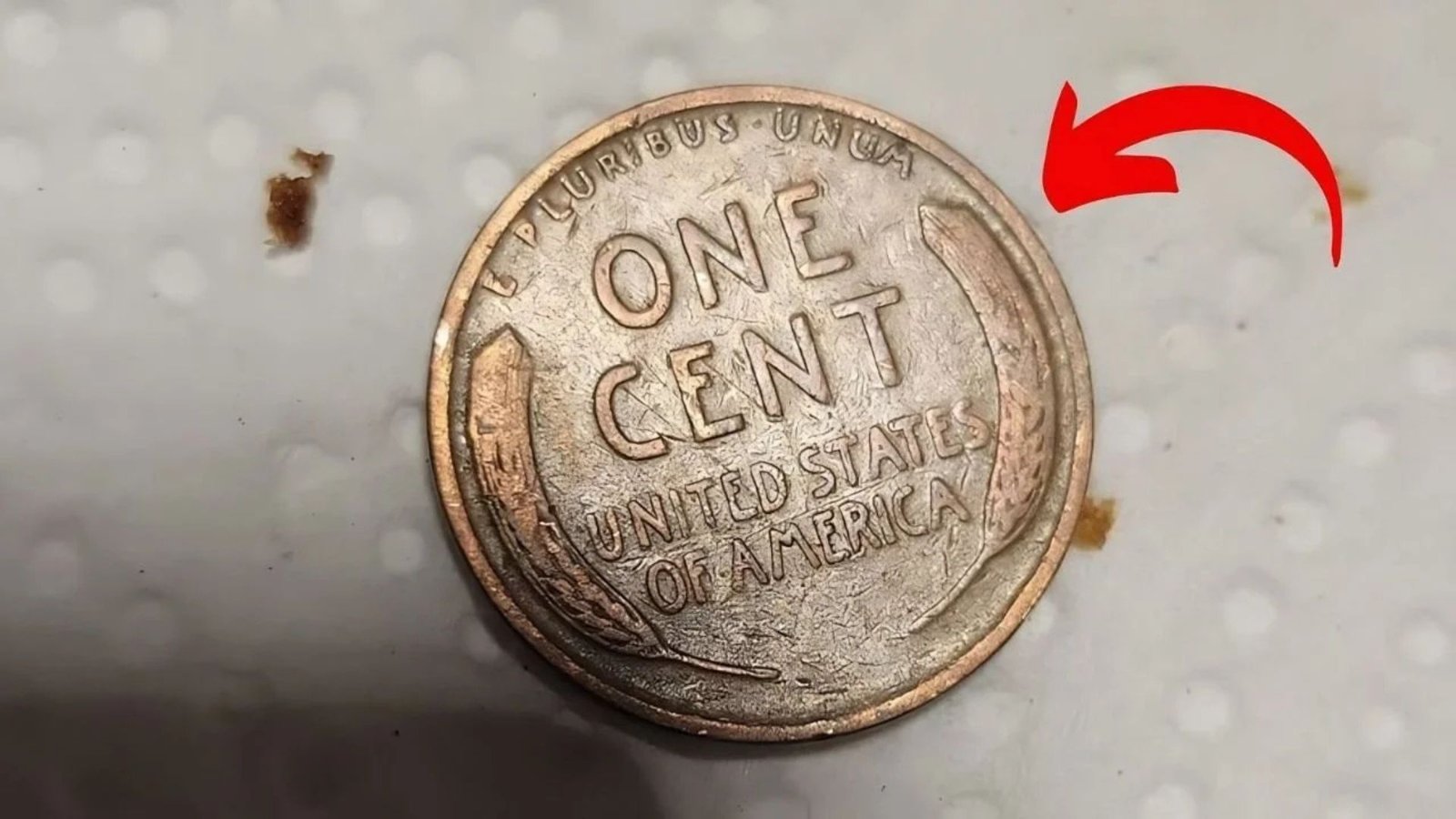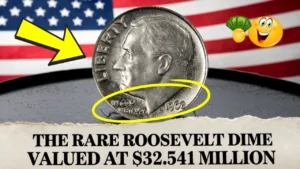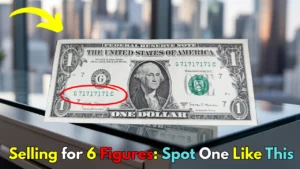Imagine stumbling across a penny in your pocket change that’s worth $5 million. Sounds like a dream, right? For coin collectors, this isn’t just a fantasy—it’s the thrilling reality of the Lincoln Wheat Penny, one of the most coveted treasures in numismatics. With its rich history, rare varieties, and jaw-dropping auction prices, the hunt for this tiny copper coin is a rollercoaster of excitement, mystery, and potential fortune. Whether you’re a seasoned collector or a curious beginner, join us on this numismatic adventure to uncover the secrets of the Lincoln Wheat Penny and why it’s worth millions.
What Is the Lincoln Wheat Penny?
The Lincoln Wheat Penny, also known as the Lincoln Cent, was minted by the United States Mint from 1909 to 1958. Designed by Victor David Brenner to commemorate the 100th anniversary of Abraham Lincoln’s birth, it was the first U.S. coin to feature a president’s portrait. The obverse displays Lincoln’s profile, while the reverse showcases two wheat stalks framing the words “ONE CENT.”
Why Is It Called the Wheat Penny?
The “wheat” nickname comes from the distinctive wheat stalk design on the reverse, symbolizing agricultural abundance. In 1959, the design was replaced with the Lincoln Memorial, making the Wheat Penny a nostalgic icon for collectors.
Key Features of the Lincoln Wheat Penny
- Material: Primarily copper (95% copper, 5% tin and zinc) until 1943, when zinc-coated steel was used due to World War II copper shortages.
- Size: 19 mm in diameter.
- Mints: Produced in Philadelphia (no mint mark), Denver (D), and San Francisco (S).
- Rare Varieties: Certain years and mint marks, like the 1909-S VDB and 1955 Doubled Die, are the holy grails of coin collecting.
The $5 Million Penny: Why So Valuable?
Not every Lincoln Wheat Penny is worth millions, but specific rare varieties have fetched astronomical prices at auctions. The value comes from a combination of rarity, historical significance, and condition.
The 1909-S VDB: The King of Wheat Pennies
The 1909-S VDB is the crown jewel of Lincoln Wheat Pennies. Here’s why:
- Low Mintage: Only 484,000 were produced at the San Francisco Mint.
- Designer’s Initials: Victor David Brenner’s initials (VDB) appear on the reverse, but public backlash over their prominence led to their removal, making these coins ultra-rare.
- Auction Record: In 2012, a 1909-S VDB in pristine condition sold for over $2.5 million, with experts estimating top specimens could reach $5 million today.
The 1955 Doubled Die: A Minting Marvel
Another legendary variety is the 1955 Doubled Die penny:
- Minting Error: A misalignment during the minting process caused a noticeable doubling of the date and inscriptions, creating a visually striking error.
- Rarity: Approximately 20,000 entered circulation before the error was caught.
- Value: High-grade examples have sold for $1.8 million, with potential to climb higher.
Other Notable Rarities
- 1914-D: With a mintage of just 1.2 million, this Denver-minted penny can fetch up to $500,000 in mint condition.
- 1922 No D: A rare error where the Denver mint mark is missing, valued at $100,000+ in top grades.
- 1943 Copper: Most 1943 pennies were steel, but a few copper ones were mistakenly minted, with values reaching $1 million.
The Thrill of the Hunt
Hunting for a $5 million Lincoln Wheat Penny is like searching for buried treasure. Collectors scour coin shops, estate sales, and even pocket change, hoping to strike gold—or rather, copper.
Where to Look for Rare Pennies
- Circulation: Some rare pennies are still in everyday change, though the odds are slim.
- Coin Rolls: Buying unsearched bank rolls of pennies increases your chances of finding treasures.
- Auctions and Dealers: Reputable dealers and auction houses like Heritage Auctions offer certified rare coins.
- Estate Sales: Old coin collections often hide gems passed down through generations.
Tools for the Hunt
- Magnifying Glass: Essential for spotting mint marks and errors.
- Red Book: The “Guide Book of United States Coins” lists values and key dates.
- Coin Grading Services: Professional Coin Grading Service (PCGS) or Numismatic Guaranty Corporation (NGC) authenticate and grade coins.
Stories of Lucky Finds
- 1943 Copper Penny: In 1947, a teenager found a 1943 copper penny in his school cafeteria change, later selling it for $40,000.
- 1955 Doubled Die: A collector discovered one in a cigarette pack in the 1960s, now worth over $100,000.
These stories fuel the excitement, proving that life-changing finds are possible.
How to Spot a Valuable Lincoln Wheat Penny
Identifying a million-dollar penny requires knowledge and attention to detail. Here’s a step-by-step guide:
Check the Date and Mint Mark
- Look for key dates like 1909-S, 1914-D, 1922, 1943, or 1955.
- The mint mark (S, D, or none for Philadelphia) is below the date.
Inspect for Errors
- Doubled Die: Use a magnifying glass to check for doubling in the date or lettering.
- Missing Mint Marks: Compare against known varieties like the 1922 No D.
- Wrong Metal: A 1943 penny that isn’t magnetic (i.e., not steel) could be a rare copper strike.
Assess Condition
- Coins are graded on a 70-point scale (1 = poor, 70 = perfect).
- High-grade coins (MS-65 or above) command premium prices.
- Avoid cleaning coins, as it damages value.
Top 5 Most Valuable Lincoln Wheat Pennies
| Year | Mint Mark | Variety/Error | Estimated Value (Top Grade) | Mintage |
|---|---|---|---|---|
| 1909 | S | VDB | Up to $5 million | 484,000 |
| 1955 | None | Doubled Die | Up to $1.8 million | ~20,000 |
| 1943 | None | Copper | Up to $1 million | Unknown |
| 1914 | D | None | Up to $500,000 | 1.2M |
| 1922 | None | No D | Up to $100,000 | Unknown |
The Numismatic Community: A Passionate Pursuit
Coin collecting isn’t just about money—it’s a vibrant community of enthusiasts sharing knowledge and stories.
Joining the Hunt
- Clubs: The American Numismatic Association (ANA) offers resources and events.
- Online Forums: Platforms like CoinTalk and Reddit’s r/coins connect collectors.
- Shows: Attend coin shows like the ANA World’s Fair of Money to network and trade.
Ethical Collecting
- Buy Certified Coins: Avoid fakes by purchasing from PCGS or NGC dealers.
- Preserve History: Handle coins carefully to maintain their condition.
- Share Knowledge: Mentor new collectors to keep the hobby alive.
Conclusion
The hunt for the $5 million Penny Wheat Lincoln is more than a quest for wealth—it’s a journey through history, craftsmanship, and the thrill of discovery. Whether you’re checking pocket change or bidding at auctions, the possibility of finding a rare 1909-S VDB or 1955 Doubled Die penny keeps the excitement alive. With patience, knowledge, you could uncover a numismatic treasure that’s both a financial windfall and a piece of American legacy. So, grab a magnifying glass, dive into the world of Lincoln Wheat Pennies, and start your adventure today!
FAQs
How Can I Tell If My Penny Is Valuable?
Check the date, mint mark, and condition. Key varieties like 1909-S VDB or 1955 Doubled Die are worth thousands or millions in high grades. Use a magnifying glass to spot errors and consult a professional grader.
Where Are the Best Places to Find Rare Coins?
Look in circulation, unsearched coin rolls, estate sales, or coin shops. Auctions and certified dealers are ideal for authenticated rare pennies.
Should I Clean My Old Pennies?
No! Cleaning damages the coin’s surface and reduces value. Leave coins in their natural state and consult a professional for preservation advice.
How Do I Get My Coin Graded?
Submit your coin to a reputable grading service like PCGS or NGC. They’ll authenticate, grade, and encase it in a protective slab for a fee.
Is Coin Collecting a Good Investment?
Yes, but it’s speculative. Rare coins like the Lincoln Wheat Penny can appreciate, but focus on passion and knowledge, knowledge and not just profit. Research and buy certified coins to minimize risks.




